The psychedelic reinvention of Patrick Cox
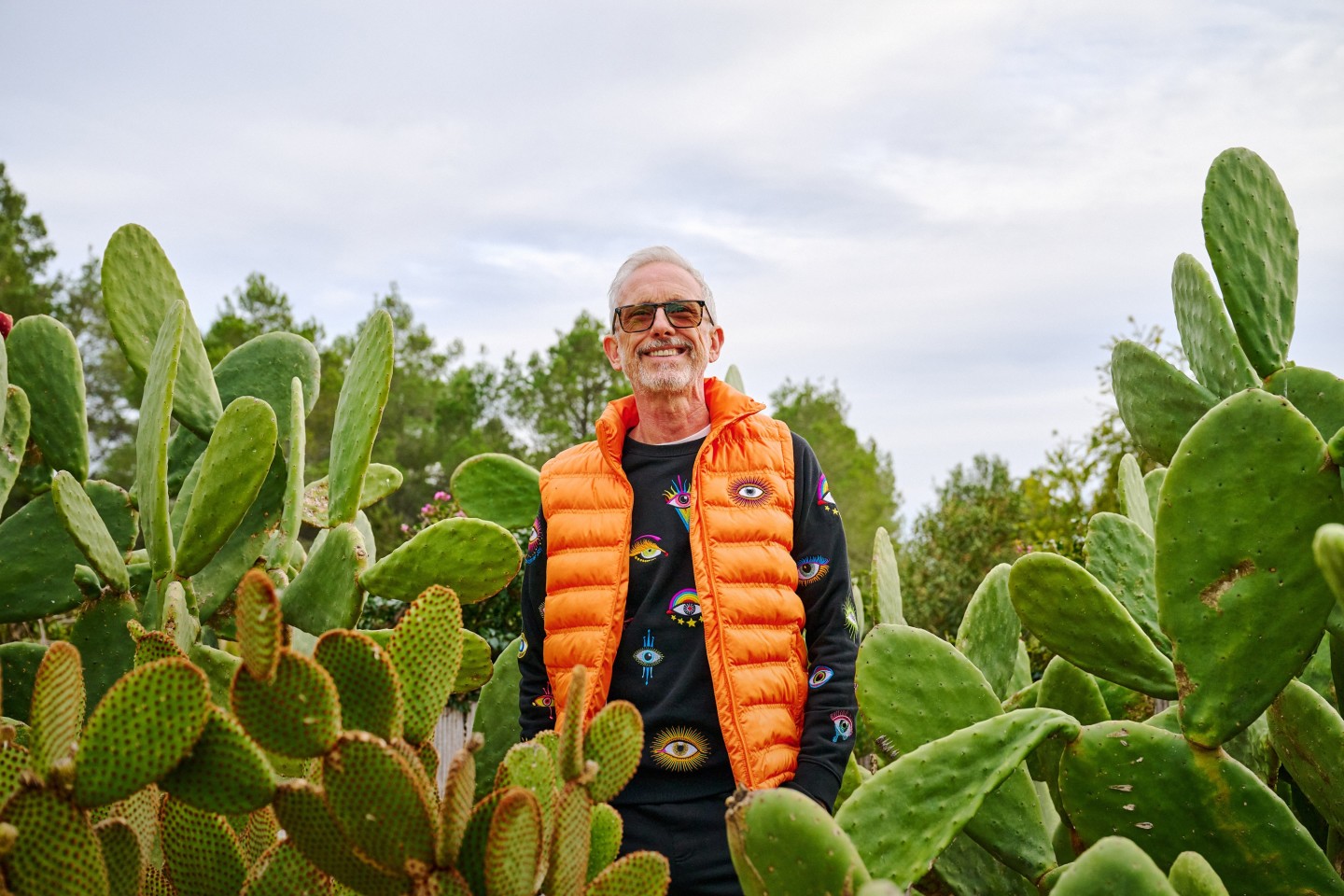
Simply sign up to the Style myFT Digest -- delivered directly to your inbox.
Ibiza is, to many, the ideal portal to escape and fantasy, but few can have taken it as far as Patrick Cox. The shoe designer, whose Wannabe loafer was quintessential 1990s disco footwear, was the mainstay of London’s society pages for decades: Janet Jackson dubbed him “Party Pat” at one of Elton John’s get-togethers, “because wherever you go, there seems to be a party”.
But where once there were parties, there is now peace; where once there was a razzy, square-toed loafer beloved by every lad in Britain, there are now hand-embroidered sweatshirts covered in eyes, disco balls and mushrooms, reflecting Cox’s new credo: psychedelics. Or, as he prefers to call them, entheogens – “substances that reveal the god within”. True to form, the journey hasn’t been without colour: it involves a dead bulldog, Christmas with Elizabeth Hurley and smoking the burned secretions of a rare Mexican-desert-dwelling toad. Patrick Cox has entered his Balearic era.

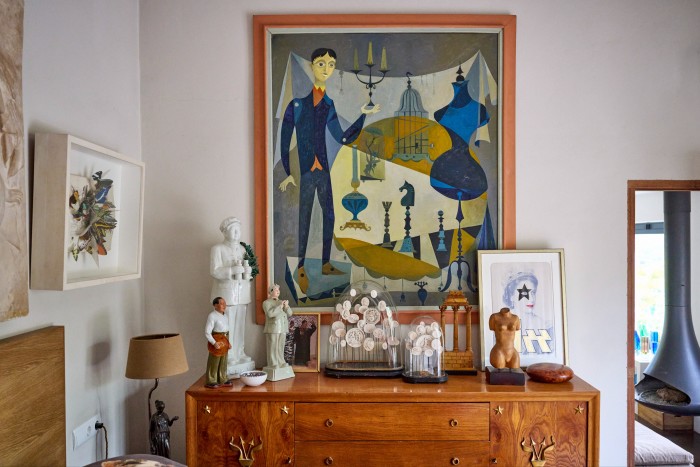
“I’ve always been part of the zeitgeist,” Cox says. He is at home on the island; a smiley, wiry firecracker about to turn 61, he speaks for hours with the pep of a 20-year-old, even while fending off bronchitis. In fact, he is doubly zeitgeisty: not only does his new “entheogenic apparel” label, Doors of Perception, speak to the current rage for all things mind-bending, his old designs are chiming with a new generation too. In an interview with this magazine, Martine Rose, British Menswear Designer of the Year at the 2023 Fashion Awards, explained how her own bestselling loafer was inspired by Cox’s – “a smart shoe that felt cool”. He is, he says, very flattered, but it’s fair to say he has moved on.
“I probably have 13 pairs of Birkenstock Arizonas lined up at my front door in every single material and colour imaginable,” he says. “It’s easy, comfortable. If someone had told me I’d be wearing Birkenstocks and socks 20 years ago, I would have shot them. And now I live in Birkenstocks and socks!”
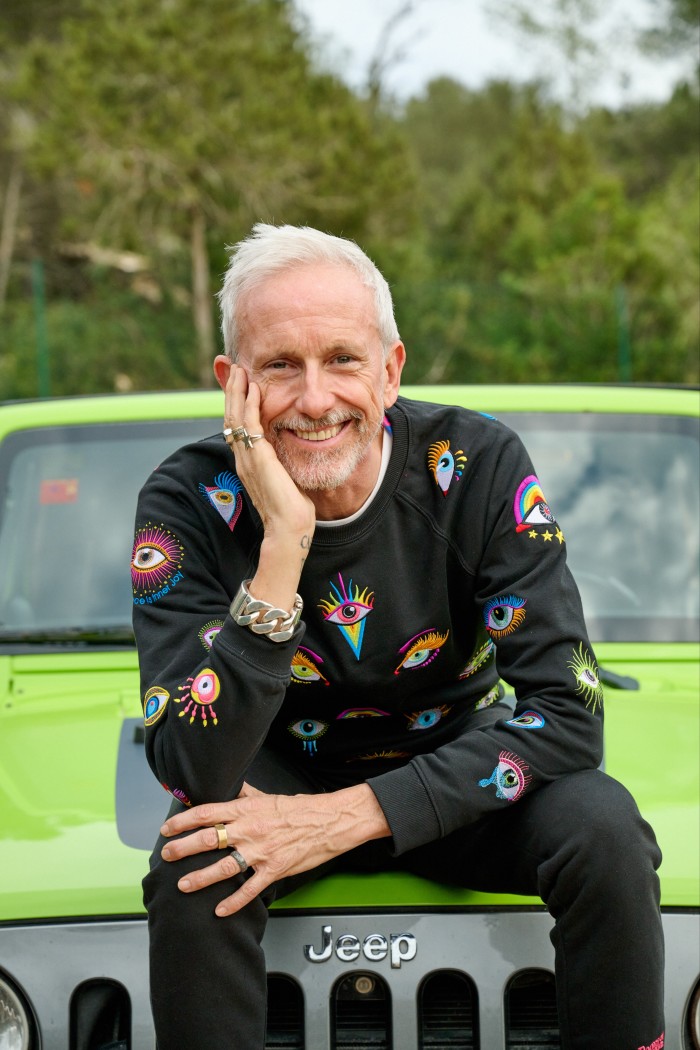
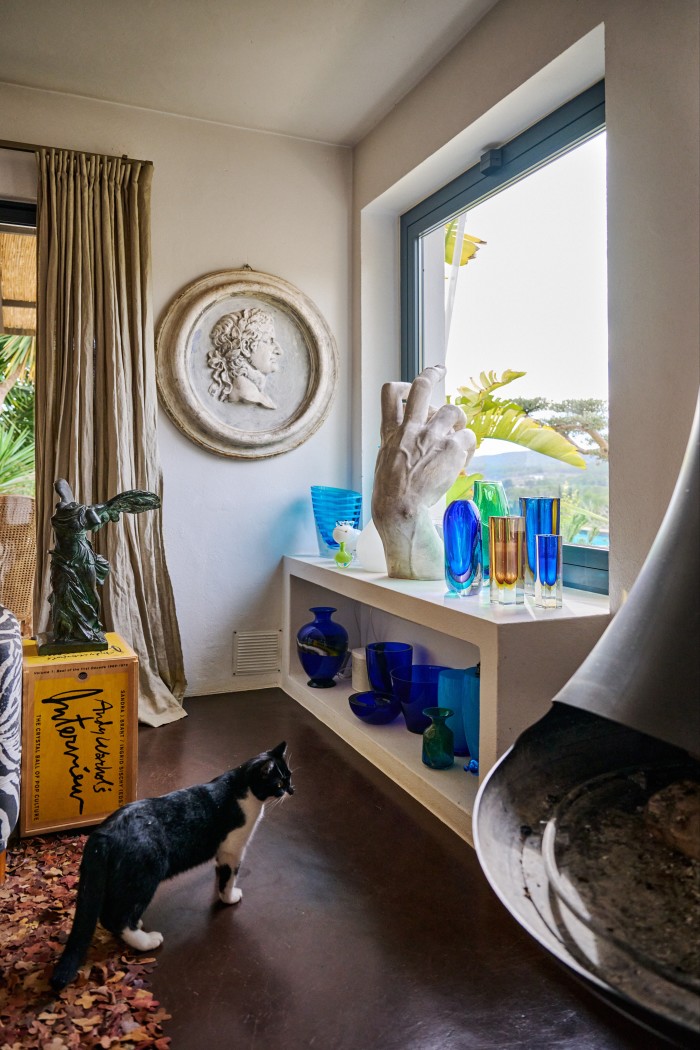
Cox’s home is in the centre of Ibiza, near Santa Gertrudis: “They call it the Notting Hill of Ibiza – it’s very yummy mummy.” He chose it because when he came here in 2017 he couldn’t cook a thing, and Santa Gertrudis is one of the few places on the island where restaurants are open through the winter. Until then, for roughly 35 years, Cox had lived in London on hamburgers and Coke (both kinds, by his own admission). If he came to Ibiza, it was only to the south, to go clubbing for days – further north was a mystery. His house today is a small two-bedroom, two-bathroom villa with an incredible view, which he has been waiting six years to demolish and replace with something bigger. This too has been a journey, thanks to Ibiza’s notoriously labyrinthine property laws.
“The first couple of years, I was calling my lawyer constantly,” he says. “And then, once I got a little more spiritual and a little like, hey, the universe will provide, they called me and said the planning came through, and I just went, sarcastically: so soon?”
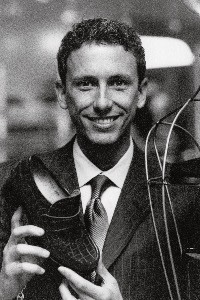
Cox is the child of a British father and Canadian mother who moved frequently because of his father’s work: spells in Nigeria, Cameroon and Chad were interspersed with time in Western Canada. It was, he says, “a sometimes violent childhood”, coloured by the era’s intense homophobia, something he has spent much time trying to come to terms with. He went first to Toronto, aged 17, to embrace the New Romantic era, and then in 1983 to Cordwainers Technical College in London to study shoe design. He took to it like a natural, working for Vivienne Westwood while still a student and launching his own label in 1985. His mass-market diffusion line, Wannabe, launched in 1993, with that loafer as its standard-bearer.
“He took the codes of the classic bourgeois shoe and made them his own by adding this punk attitude,” says Geert Bruloot, former co-owner of Antwerp’s cult designer shoe store Coccodrillo (now closed), and co-curator of Foot Print: The Tracks of Shoes in Fashion at the city’s Fashion Museum, where several of Cox’s designs featured. “He brought emotion with his shoes – he told a story.”
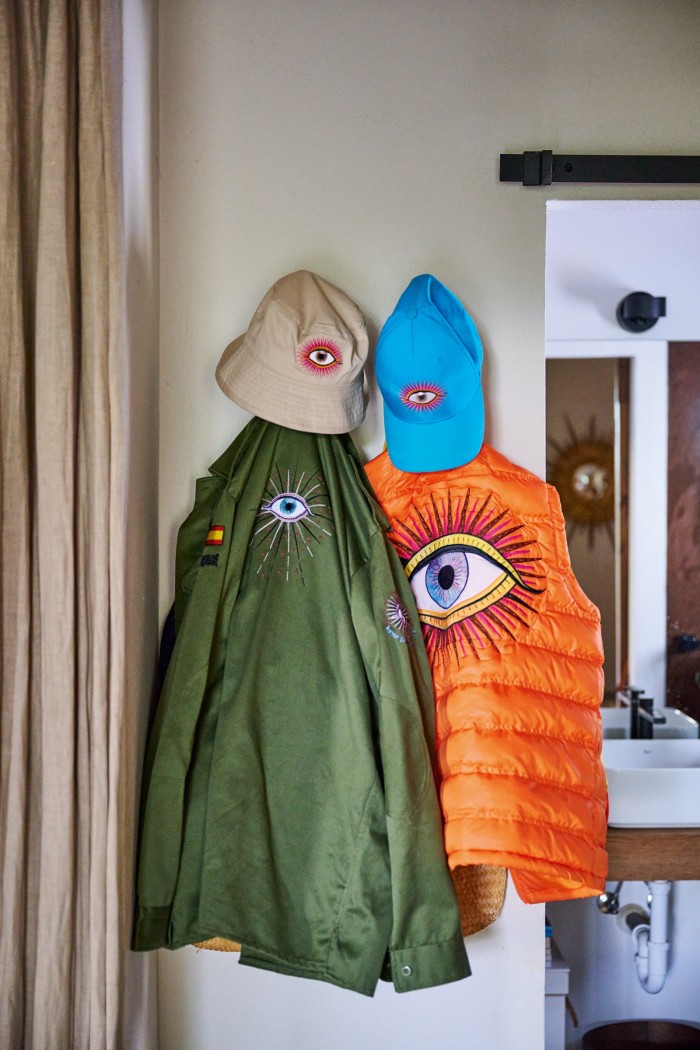

The vast, democratic success of the Wannabe took Cox by surprise. “When we first opened our store in Tokyo, Rei Kawakubo stood across the street and watched, because all of her staff had Wannabe loafers,” he says. “I remember speaking to someone at Jil Sander who said, ‘The entire team has your loafers on’, and then speaking to someone at the Gap who said their entire team had them on too. It became something other than itself.” Japan was a massive market, with the Patrick Cox brand selling luggage, jewellery, handbags, wallets, scarves and umbrellas; he was so well-known, he would be asked to sign autographs when out in public.
But it couldn’t last. The details of the company’s decline are complex but essentially it overexpanded, an investor took over, and Cox left in 2007. He worked for Italian shoe brand Geox for several years; he also had a phase running a cupcake store in London. It was all coupled with a creeping sense of burnout. Was fashion a drug for him? “I think fashion fed my demons,” he replies. “My need to be loved, my need for attention, my need to stand out, my need to be special.” However, he adds – and not for the first time – “this isn’t a sob story. I had a great fucking time for 20 years! Until I didn’t.”
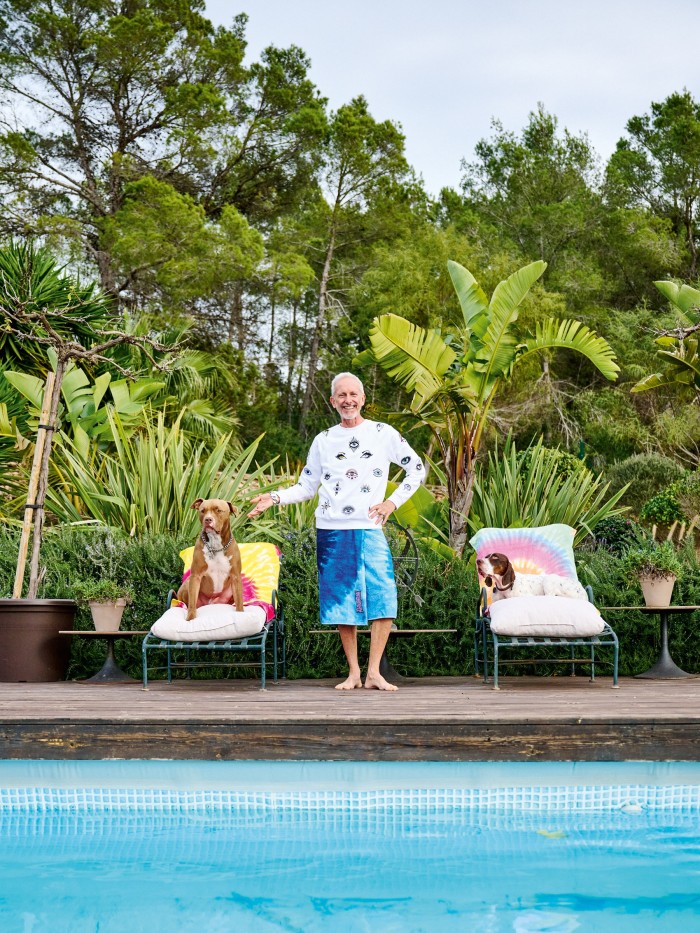
Early in 2017, he decided to move to Ibiza in order to live more quietly and spend more time with his two beloved dogs. But when Brutus promptly died, he was pushed “over the edge” into what became a significant depression. His friends (Hurley and Elton John) checked him into rehab. But even that didn’t hit the spot. “Rehab wasn’t really for me, and therapy wasn’t really for me… I just thought: there must be something else.” Enter the entheogens.
There’s no historical record of the use of “toad” – as its users call it; no conclusive evidence of indigenous use. Its official recorded appearance dates back to 1983, when an American named Ken Nelson drove to the Mexican border and tracked down the Sonoran Desert toad. (In America it’s also called the Colorado River toad, for hopefully obvious reasons.) Nelson grabbed the toad and stroked it under its chin until it produced a milky substance, which he then let dry on his van windscreen in the blazing sun. He then smoked this. The secretion contained 5-MeO-DMT, a psychedelic substance that is also found in various plants. Says Cox: “It can change your life, change reality, and give you that ‘god’ moment, for lack of a better word.”
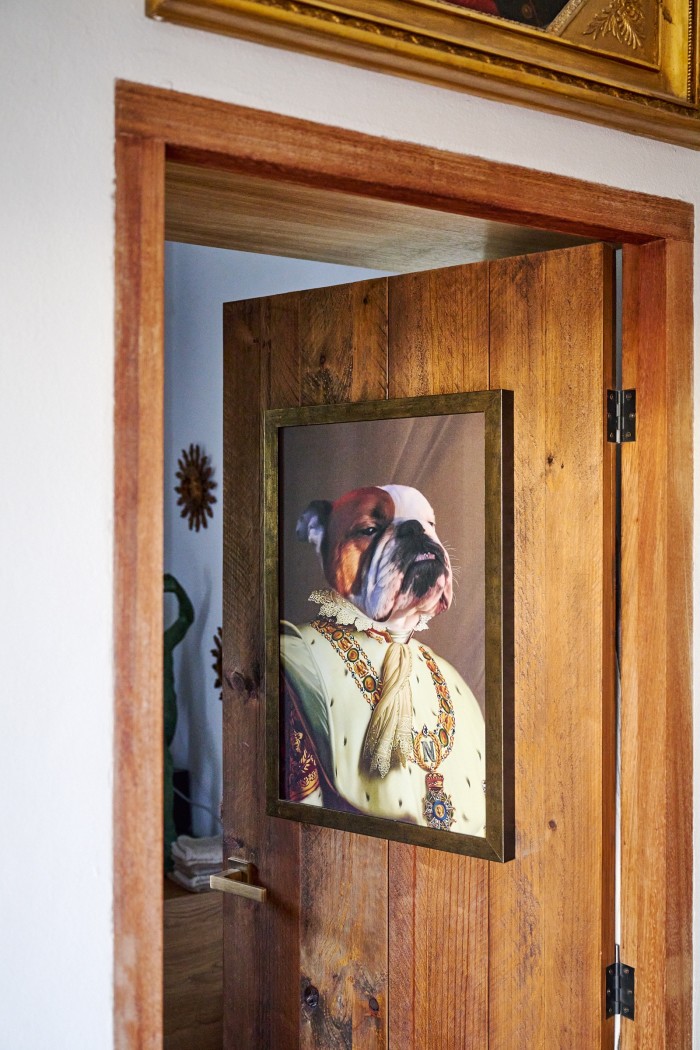
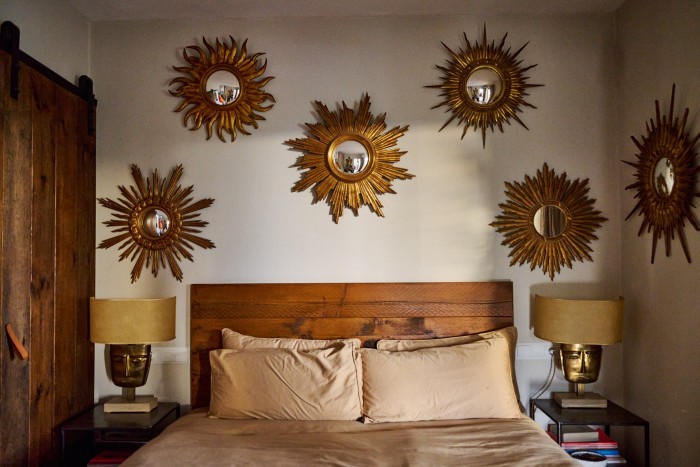
It was a toad ceremony on 1 June 2019 that changed Cox’s own life. The whole guided experience is relatively short: one minute “you become the light”, he says, “the whitest white light you’ve ever experienced in your life” – but then normally, “within an hour, two hours, you’re good to drive a car”. Toad has passed relatively under the radar compared with ayahuasca, mushrooms or LSD (all of which Cox has opinions on): it is circumscribed by different legalities across the world. In Ibiza, for instance, using it and possessing it has been decriminalised, but it’s still illegal to sell it. In the UK and the USA it is illegal. Users such as Cox don’t consider it to be “drugs” but “medicine”. “It’s not recreational,” he points out. “It is deep, healing, transformative work. I don’t recommend it unless you’re ready for your entire concept of reality to change.” It certainly changed his. “I just had this moment of purity where I saw myself as I truly am… you’re a perfect light being, everyone is. And once you’ve seen that, you can’t unsee it.”
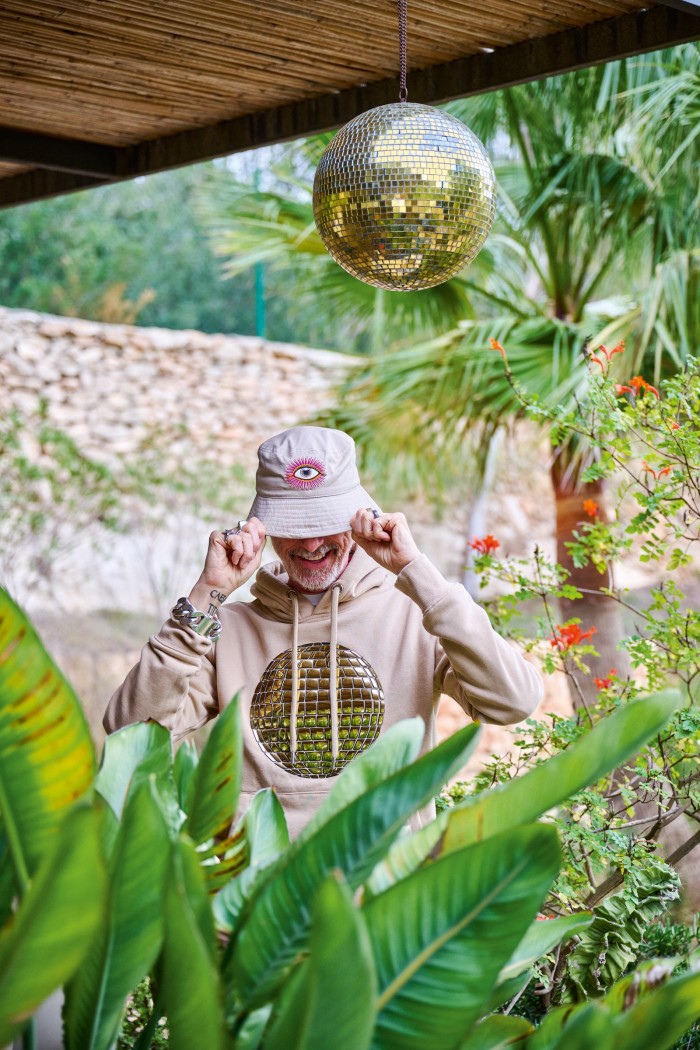
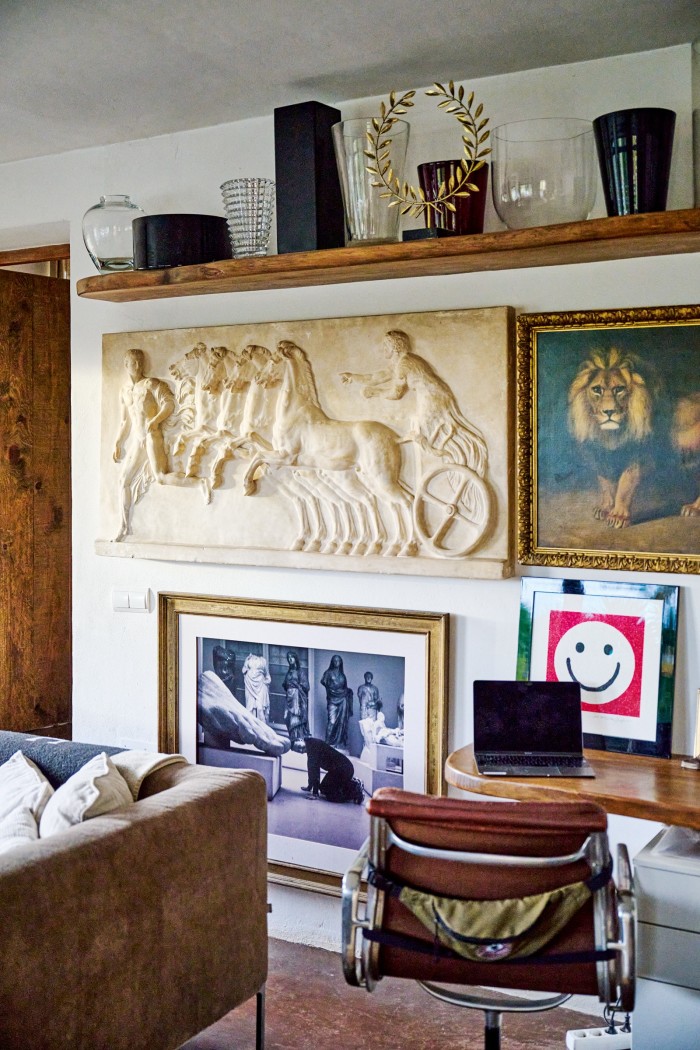
For a long time, even after he smoked the toad, Cox had got used to dismissing his entire career as a failure. “It’s funny,” he says, “I’m working on this documentary [about my life], and the makers have footage of me saying, two years ago, ‘I will never design another thing again.’” But “I am a creative being”, he says. As he walked around Ibiza’s flea markets and stores, he began to wonder: “Is there an Ibiza brand?” There are, he says, definitely a few jewellers and craftsmen about, “but I hadn’t really seen anything that captured the spiritual Ibiza”.
So he ordered a few plain sweatshirts from blanks stores and commissioned local embroiderers to embellish them with a motif he had designed of an eye – a particularly potent image in the entheogenic world. He had some 80 sweatshirts customised to sell to nearest and dearest, and during Christmas 2022 – which he was celebrating with Hurley, as he does every year – he gifted her a sweatshirt. She posted a selfie of her wearing it, and the Instagram following for Doors of Perception grew tenfold. “I was like, OK! We’ve launched! I can’t go back now.” (Cox says that Hurley is “like family – the most loyal mama bear”. They spend their time together discussing dogs and gardens: before, he never cared for what tree was what, but now he can grill her on it for hours. Hurley, in turn, says via email, “I was bereft when my partner-in-crime left the UK, but there’s no denying he’s found peace in Ibiza.”)
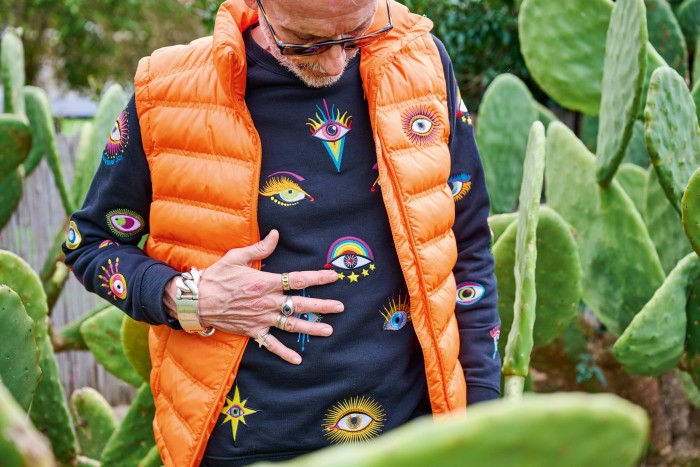
From the eye motif he moved onto a disco ball, because for a gay Canadian teen in the 1970s disco was salvation – “and I think all religions, all spiritual practices, have an element of losing oneself – of dance – to them”. Next up are mushrooms and, yes, the toad. Cox is creating this new venture very gently: checking in on the embroiderers every day, posting the results bit by bit on his website, sending them via DHL when he sells. There is only one full-time employee: “me”. The amount of embroidery is so complex that he should, if he were sensible, charge €800 for each sweatshirt, but he has opted for a more reasonable €435. “It’s not been strategic at all and there is no five-year plan. There is no plan, because I was planned up the wazoo my whole life for 30 years and it didn’t bring me joy.” People are responding positively: he recently met Robbie Williams on a weekend in Gstaad, and the singer instantly ordered some pieces, which he wore for his 50th birthday. The last time they had met was 1998, thinks Cox, with Elton and David. What was that like? “Nothing untoward.”
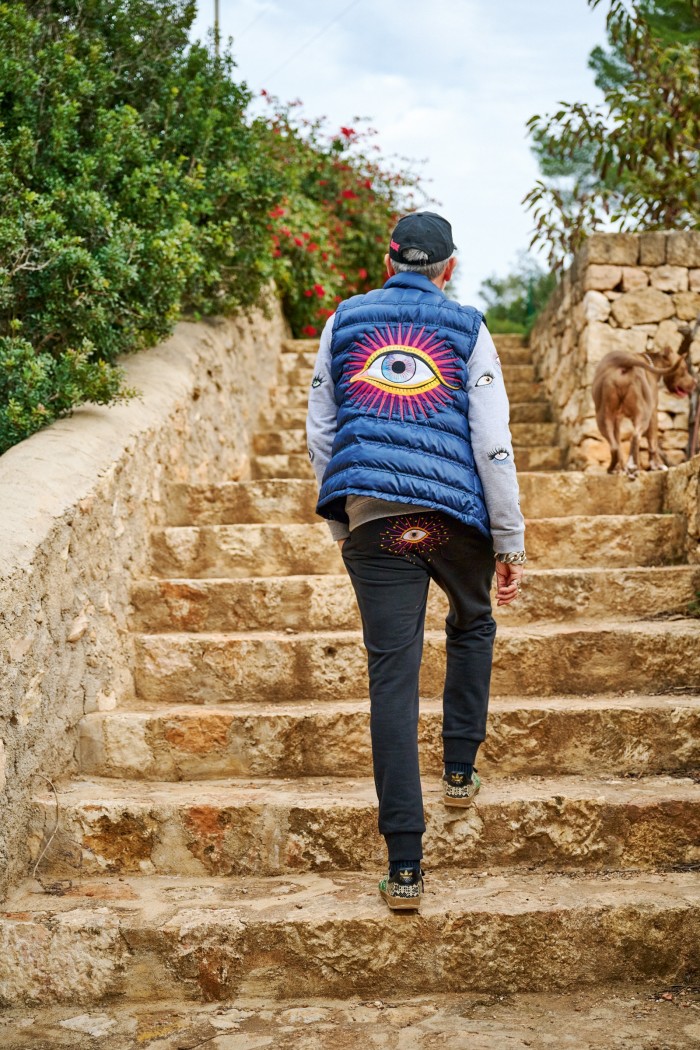
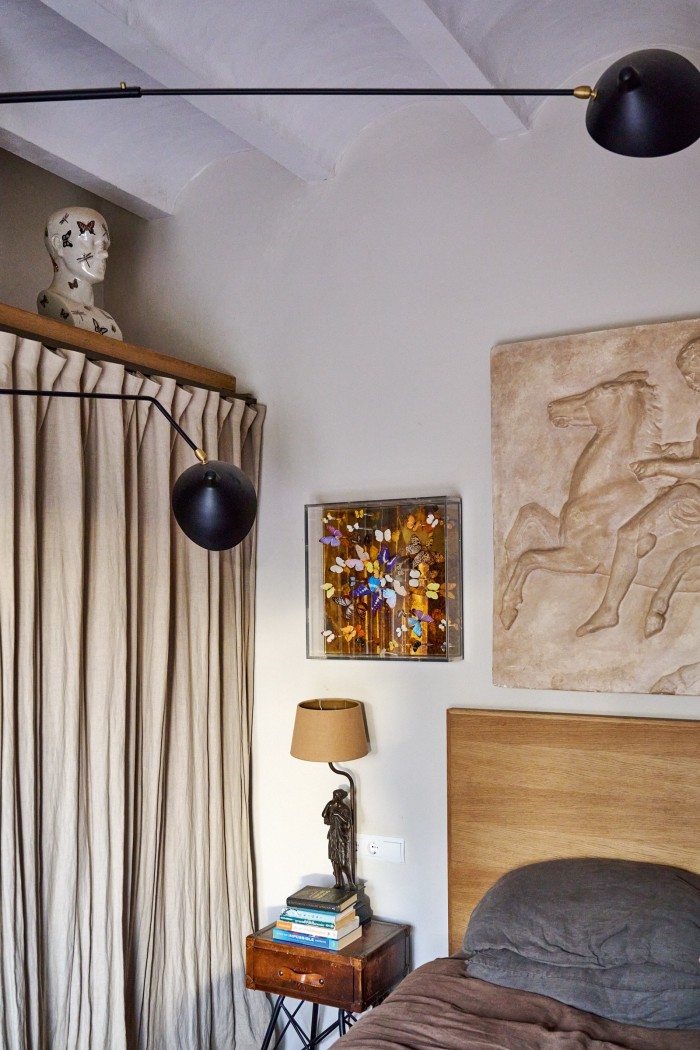
These days, Cox is happiest in his garden, a delirious concoction dotted with cacti, fruit trees and topiary. His original concept for it was “Edward Scissorhands meets Pucci”. But his approach has changed to this as well. “At first I found it quite frustrating as I wanted everything to be perfect – I’d have a fit every time something died or grew the ‘wrong’ way,” he says. “Then, perhaps as a metaphor for my spiritual transformation, I learned to go with the flow. One can’t dictate what nature does but rather encourage it.”
His pride and joy is his organic veg patch, which produces a cornucopia of food: “broccoli, kale, lettuce, fennel, cucumber, various melons – which I used to think grew on trees! – watermelon, corn, artichoke, wine aubergine, pumpkin, loads of peppers…” Also, his favourite, a selection of cherry tomatoes in different colours. All these he will then “burn” on the grill (the cooking part is still a work-in-progress) or put into a delicious salad. “On a typical morning I’ll make myself a cup of tea at 6am and put on my oms” – a YouTube recording of 1,111 oms – “lasting many hours, then wander out into the garden for a spot of weeding barefoot in my underwear”. He can stay in his garden, “covered in mud, almost crying”, for hours, “blissfully unaware of the time”.

Once, he only sought certainties – yes or nos – a tendency exacerbated by working in fashion. “As fashion people, we’re very critical about everything,” he says. “I used to always say that I love or I hate, I love or I hate, I love or I hate. I was like, can you just like something?” Today, he says, the great advantage of his epiphany has been “learning to live in the grey”. He is even, slowly, phasing out his own use of toad, hoping to eventually only do it once a year. The aim is to be able to find ways of procuring enlightenment without it.
And yet a certain extremity prevails. Towards the end of our interview, he mentions, “I wanted to have a giant bonfire and burn my entire archives. And the producers of this documentary about me were like, ‘Can you just hold off on that bonfire until we do the movie?’” He insists it’s still a good idea – he has actually donated the best of his collection to the V&A and the Fashion Museum in Antwerp. But “I do swing dramatically”, he admits cheerfully. “It’s probably extreme to want to burn the entire place down…”
It would be churlish, though, to pick holes in his peace. And his fans needn’t panic, as it turns out he is in the early stages of doing the one thing he really, really, really said he wouldn’t do – namely, designing some brand new shoes. “I’ve done the hat, the top, the bottoms, the bag, the wallet,” he reasons. “I’m ready for this!” Although Wannabe fans be warned: it’s just a sandal.
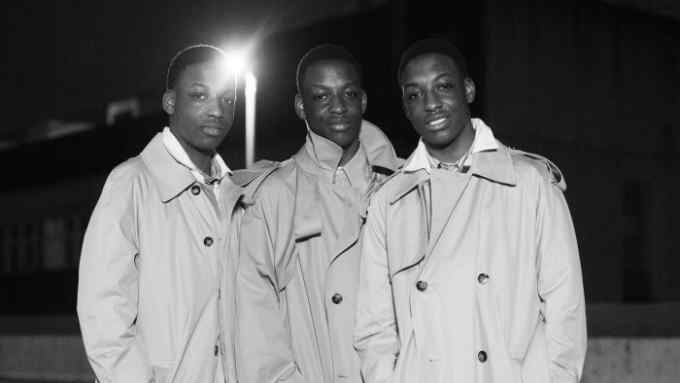
Comments